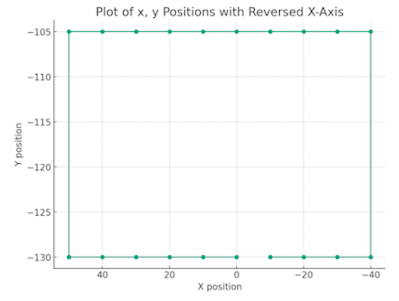 |
| Mojo5 - with power bank battery |
The Problem with Underpowered Servos
Building a quadruped robot like Mojo5 with cheap hobby servos often leads to performance issues. Many of these servos, such as the MG995, are slow and lack the torque needed for dynamic movements. Even with a 5V power supply, these servos can become wobbly and unreliable, especially under load. This is where upgrading to more powerful batteries comes into play.
The Limitations of the Original Power Configuration
Initially, Mojo5 used a 5V 12000mAh power bank. While this power source had a high capacity, it was limited to a maximum output of 3A. Given that the MG995 servos have a stall current rating of up to 3A each, the total current demand for the robot could easily exceed 20A during peak operation. This significant shortfall in available current was a primary cause of the robot's poor performance.
Upgrading the Power Source: LiPo Batteries
Based on previous discussions and experiments, we found that using a more powerful battery can drastically improve servo performance. Upgrading to a LiPo battery with a 2200mAh capacity, 7.4V voltage, and a 50C discharge rating provides the needed boost. This battery can supply well over the 20A needed by the servos, addressing the current limitations of the previous power source.
Considerations for Over-Volting
Risk of Burnout: Exceeding the servo’s voltage rating does carry a risk of burnout. However, anecdotal evidence suggests that slight over-volting is generally safe if monitored properly. Implementing a voltage regulator could limit the current capacity, which might be counterproductive. In general voltage regulators on servo power sources are not recommended.
Separate Circuits for Different Servos: For servos with lower voltage ratings, such as the MG90 (max 6V), consider creating a separate circuit to avoid over-volting. This will add an additional circuit which can be problematic. For my experiments with Mojo5, I used the same circuit.
Practical Application: Experimenting
Initial Setup
Battery Connection: Connect the 7.4V 50C LiPo battery directly to the power bus of the PCA9685 servo driver, bypassing capacitors and regulators. This setup ensures the servos receive power directly.
Handling Large Wires: Safely connecting XT-60 battery connectors and their thick 12 AWG wires to smaller electronics is challenging. Using a bare copper PCB or prototyping PCBs with multiple copper lines can provide a more robust connection. Soldering all wires together is an ugly but space-efficient solution.
Experiment Results
After connecting the 7.4V battery:
- Servo Performance: There was a noticeable improvement in servo actuation. The MG995 servos operated better, with no immediate burnout.
- Heat Management: Monitoring the temperature of connectors and wires is crucial. Using a finger-test method (keeping fingers on components for one minute) can help identify safe current levels. If components become too hot to touch, reduce the current.
To visualize the improvement, I have embedded a short video showing Mojo5's performance with the original 5V power bank versus the upgraded 7.4V LiPo battery. Notice the difference in servo response time and stability.
Long-Term Solutions
While the initial experiments are promising, long-term solutions require more robust hardware:
- Custom Servo Driver Board: Developing a servo driver board with better connectors and thicker traces can handle higher currents more efficiently. This would replace the PCA9685 board, which is not designed for high current loads.
- Current Monitoring: Implementing current measurements and safety features like e-fuses can prevent overcurrent situations and protect your components.
Conclusion
Upgrading to more powerful batteries can significantly enhance the performance of underpowered servos in your DIY robots. While there are risks associated with over-volting, careful monitoring and proper hardware can mitigate these risks. As we continue to push the boundaries of DIY robotics, sharing these experiences and solutions will help us all build more capable and reliable robots.








